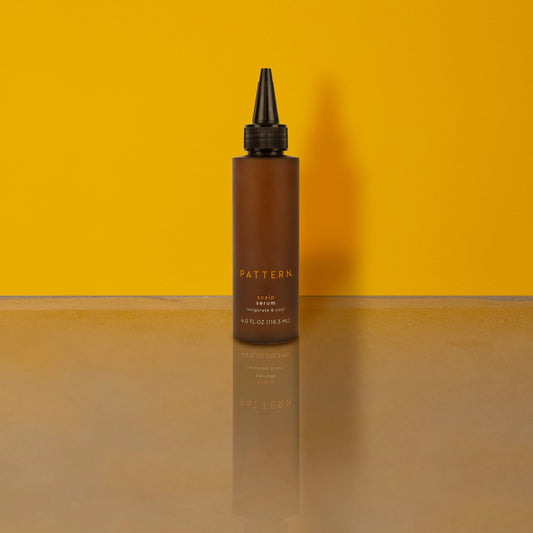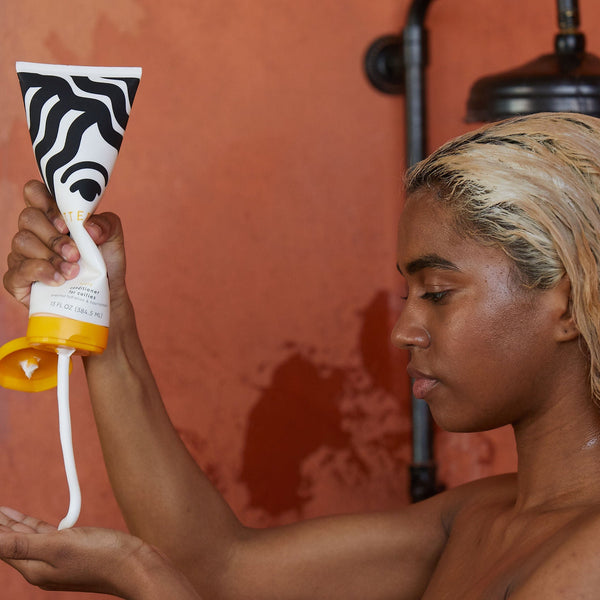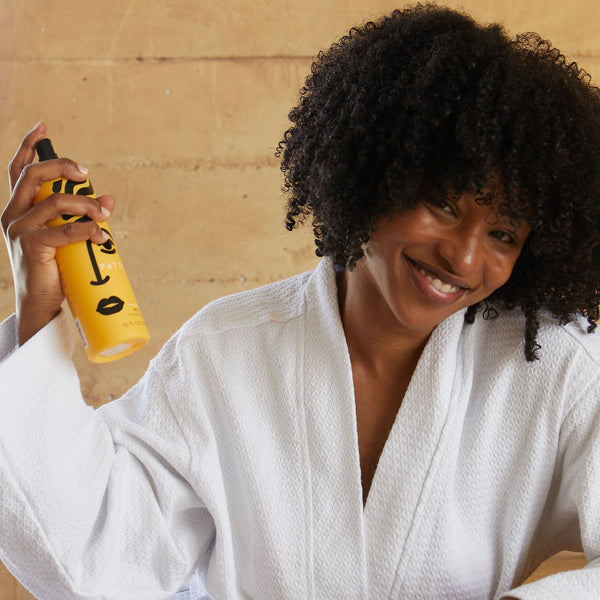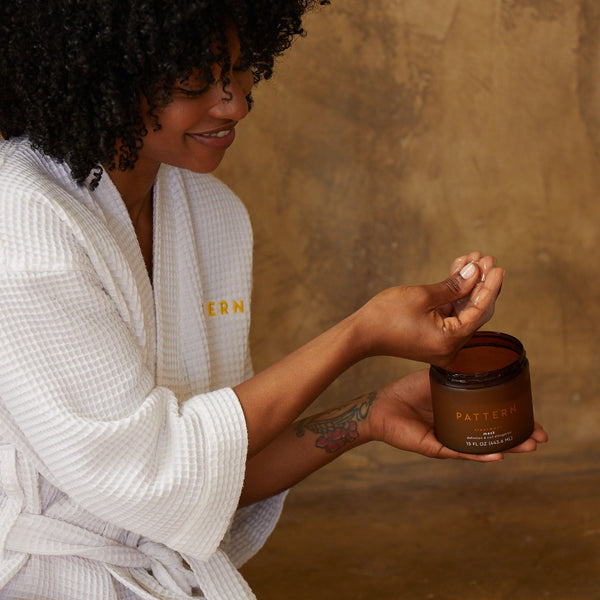By Ebony Bomani
Joyful hair starts with a joyful scalp. But if you only know when your scalp is dry or itchy, you're not alone...plus, that's not all there is to know.
Throwing back to the days spent in classrooms learning a new subject, we're here to help you learn the basics of scalp exfoliation and care which you can think of is an introductory course.
Here's what you need to know to achieve healthy hair starting at the root.
Understanding the Scalp and its Function
Skin is the body's largest organ. It guards our bodies from extreme temperatures, damaging sunlight & pollution. It also enables us to experience physical sensations, such as, touch, heat and cold. Part of the skin, that's located only on top of the head, which is the scalp, is where the hair is born. To provide the best environment for the follicles to birth quality hair, the scalp should be kept clean, balanced & supported by healthy stimulation.
The scalp is comprised of blood vessels that carry nutrients through the follicles, to the hair. The scalp skin is similar to the skin on the rest of your body, except it has larger sebaceous glands, also known as oil glands, that produce more sebum (the body's natural oil). The purpose of sebum is to reduce moisture loss, lubricate, protect & nourish the scalp & hair.
How to Assess What Your Scalp Needs
As with everything, each scalp comes with its own set of needs & thriving agents. Not all scalps are created equal. Therefore, scalp care regimens are not one size fits all. Chances are, unless you've experienced oily hair (result of an oily scalp) a dry, flaky, itchy, or inflamed scalp, you may have overlooked the importance of scalp cleansing.
You may be wondering, 'How would I know what my scalp needs?' Well, let's start here: A healthy pH for the scalp falls between 4.5 - 5.5, which is mildly acidic. In addition to pH balance, the proper amount of natural oils, produced by the oil glands, play a vital role in a balanced, healthy scalp. If your scalp produces too much oil, it can create an environment that introduces flakes, bacteria & sometimes irritation.
What does scalp health look and feel like? A healthy scalp looks even in color, is flake-free & smooth. It may even have a natural luster or sheen. A healthy scalp feels hydrated & calm, rather than itchy, tight, & irritated.
Healthy Scalp Care Practices
Scalp skin can behave like facial skin & may exhibit some of the same characteristics. The most common scalp types are: Balanced, Oily, Dry/Itchy, & Combination.
To provide and maintain a healthy environment for your scalp to thrive, you should:
- Consume a balanced, nutritive diet
- Use the best shampoo for your scalp's condition, at least once a week, to keep your scalp clean & balanced.
- Between wash days, keep your scalp conditioned with PATTERN's Scalp Serum, designed to invigorate & cool the scalp.
Ingredients, such as, peppermint & rosemary essential oils help to cool & increase circulation on the scalp, while aloe soothes the scalp, improves hydration and reduces the effects of dryness.
Keep in mind that even a healthy, balanced scalp still needs preventive care in order to remain healthy. Learning what your scalp needs takes a little time, attention & patience.
Ebony Bomani is a licensed cosmetologist, textured hair enthusiast, content creator & brand educator. Connect with her about healthy hair care & green beauty-related topics via Instagram or LinkedIn.





